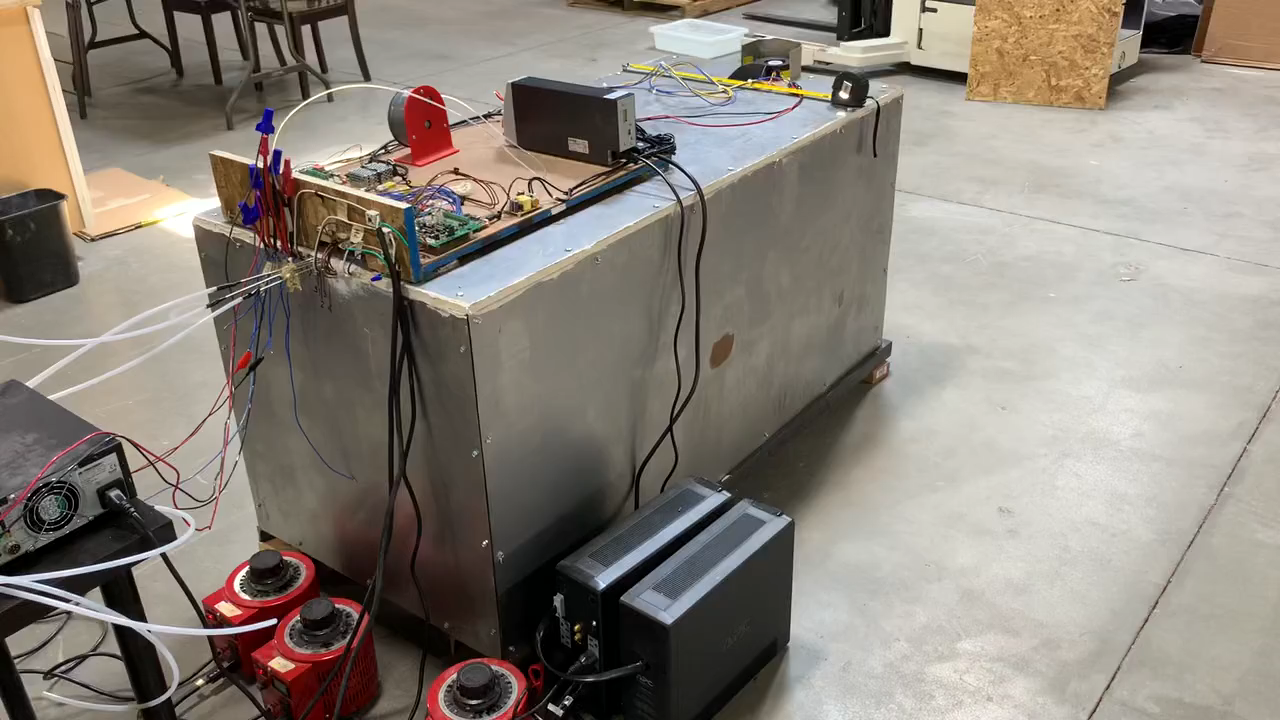With the nation facing multiple health and industry challenges, oxygen supplies have become more important than ever. NASA-supported research now offers a way to meet those needs with technology developed for use on the Moon.
Oxygen therapies have proven lifesaving in countries dealing with coronavirus. And high-purity oxygen is a crucial manufacturing component for the for the semiconductor industry, which currently faces global shortages affecting everything from cars to smartphones. For both of those applications, facilities need reliable supplies of high-purity, medical-grade oxygen.
Much of the high-purity oxygen used around the world comes from companies that make sure it’s medical-grade – more than 95% pure – and ship it to the places that need it. This process works well for facilities relatively close to providers, but not for those in remote locations or developing nations. To generate their own purified oxygen on-site, users currently rely on “pressure swing absorption” devices, but those clog frequently and can require extensive maintenance.
NASA, in collaboration with American Oxygen LLC, has developed and patented technology that can offer a solution to these challenges, and looks to be more self-sufficient and durable: the Medical-Ceramic Oxygen Generator (M-COG), which uses a method known as ceramic ion transport membrane technology.
“This emerging technology has the potential to provide oxygen in environments that currently lack reliable access,” said John Graf, NASA engineer and technical lead for the M-COG project. “The ceramic oxygen generator is solid state, with no moving parts. M-COG’s system is a process air blower like the ventilation blower in an automobile. A prototype ceramic oxygen generator operated continuously for almost two years at a military base in Afghanistan. We know COGs can reliably produce oxygen in harsh operating environments.”
In 2020, NASA’s Engineering Safety Center (NESC) at the agency’s Langley Research Center in Hampton, Virginia, initiated a project to adapt ceramic ion transport membrane technology for medical use in response to COVID-19. The result was the M-COG, which is immune to the primary factors that cause other oxygen generators to fail, including altitude, atmospheric dust, and moisture.
The M-COG uses ceramic wafers that, when heated, pull oxygen out the surrounding air. That oxygen is then channeled into storage systems. Engineers and analytical chemists at the NASA White Sands Test Facility in Las Cruces, New Mexico recently completed a purity analysis of oxygen the M-COG produces and reported that its purity levels were over 99.95%. This makes the M-COG viable for medical uses, and for industrial applications such as semi-conductor manufacturing, which uses high-purity as an oxidizing agent to create the silicon layers in chips.
The prototype under construction will produce 34 liters per minute (LPM). That means the M-COG could provide medical facilities with a reliable source of oxygen, with easy storage – the unit is roughly the size of a chest freezer.
While the device has obvious medical and manufacturing implications on Earth, NASA originally began development with another location in mind: The Moon.
Oxygen used by astronauts for Moon walks, spacewalks and other activities must be very pure. So, NASA sponsored American Oxygen to develop a safe, reliable way to recharge space suit oxygen tanks with high-pressure, high-purity oxygen.
The Moon’s surface contains deposits of water and ice that could prove critical for exploration and habitation. NASA plans to explore the Moon’s South Pole to map out the location and concentration of water and ice through its VIPER mission. Moon-based settlements could one day split water into gaseous hydrogen and oxygen through electrolysis, then use a device like the M-COG to purify the oxygen. The hydrogen would also prove useful as fuel.
The discovery and processing of water will also be an important part of Artemis, NASA’s ongoing effort to establish a sustainable presence on the Moon to prepare for missions to Mars.
NASA and other agencies have supported oxygen concentration and purification research for decades, but previous generators were large and power-intensive. Recent breakthroughs by NASA have addressed these limitations. The M-COG prototype requires about 70 Watts of electricity to produce a liter of oxygen, and researchers expect that number to drop to 50.
“It took us eight years of trying, and the first two design approaches didn’t work, but the NASA team kept at it,” Graf said. “And in 2021 NASA submitted a patent for an innovative method of operations that significantly improves energy efficiency. With the patented technology, it is practical to power an M-COG with electricity from solar panels.”
NASA is set to complete its protype in March 2022 and will look to partner with other organizations to move the system out of the lab and into service.
























